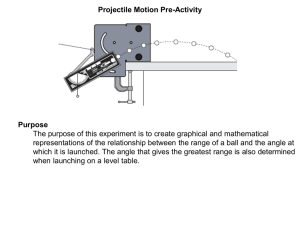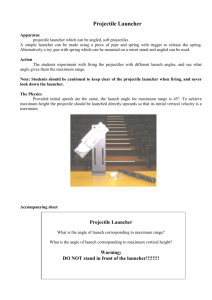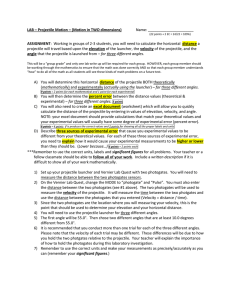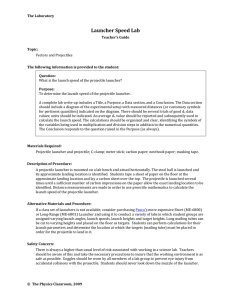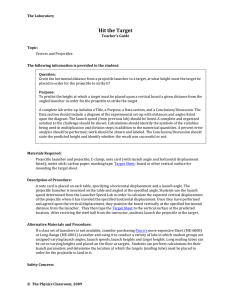Projectile Motion Lab Report: Kinematics Experiment
advertisement
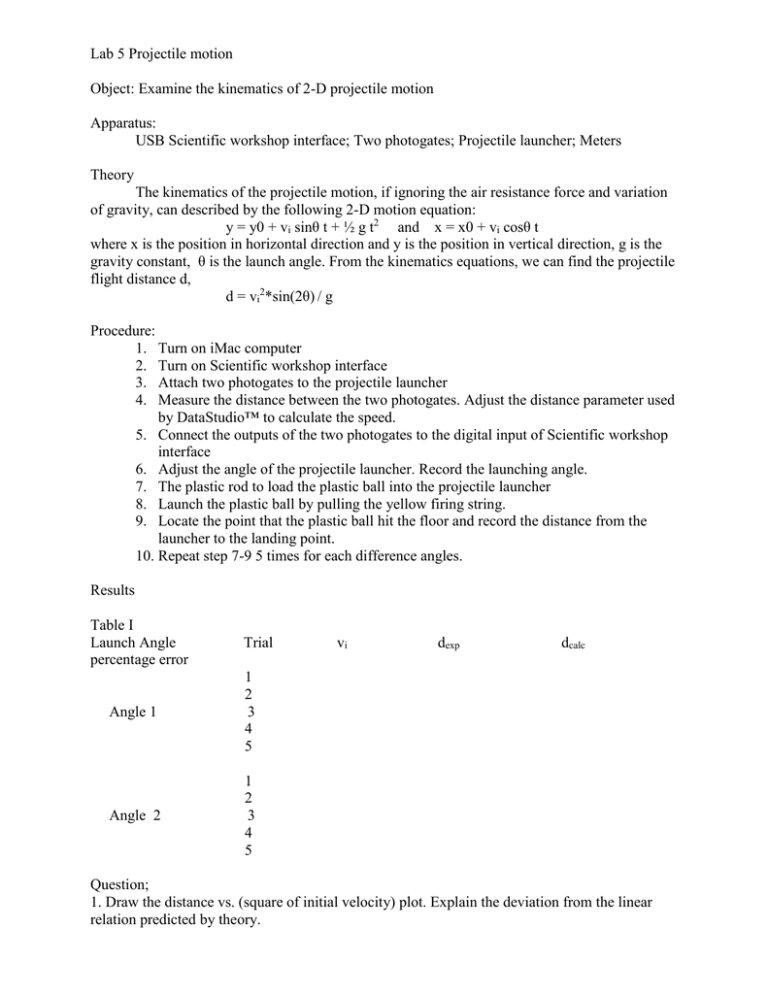
Lab 5 Projectile motion Object: Examine the kinematics of 2-D projectile motion Apparatus: USB Scientific workshop interface; Two photogates; Projectile launcher; Meters Theory The kinematics of the projectile motion, if ignoring the air resistance force and variation of gravity, can described by the following 2-D motion equation: y = y0 + vi sinθ t + ½ g t2 and x = x0 + vi cosθ t where x is the position in horizontal direction and y is the position in vertical direction, g is the gravity constant, θ is the launch angle. From the kinematics equations, we can find the projectile flight distance d, d = vi2*sin(2θ) / g Procedure: 1. Turn on iMac computer 2. Turn on Scientific workshop interface 3. Attach two photogates to the projectile launcher 4. Measure the distance between the two photogates. Adjust the distance parameter used by DataStudio™ to calculate the speed. 5. Connect the outputs of the two photogates to the digital input of Scientific workshop interface 6. Adjust the angle of the projectile launcher. Record the launching angle. 7. The plastic rod to load the plastic ball into the projectile launcher 8. Launch the plastic ball by pulling the yellow firing string. 9. Locate the point that the plastic ball hit the floor and record the distance from the launcher to the landing point. 10. Repeat step 7-9 5 times for each difference angles. Results Table I Launch Angle percentage error Trial Angle 1 1 2 3 4 5 Angle 2 1 2 3 4 5 vi dexp dcalc Question; 1. Draw the distance vs. (square of initial velocity) plot. Explain the deviation from the linear relation predicted by theory.


